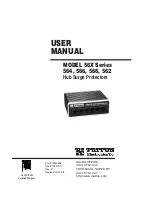
Section 3: Operation
3-58 Christie DS+60/DW30/Matrix 3000 User’s Manual
•
If you have created a “User 1” color gamut (recommended) for a well-
matched wall, continue to Step
1e
.
•
If you prefer maximum brightness rather than a particular color
temperature, select “Max Drives”.
IMPORTANT
Do not change User 1 Color Adjustment
in color-matched applications!
1e)
In the White Uniformity
menu, set the “Overall”
output level to 50.0 and all
remaining slidebars to 0.0.
This decreases the light
output just enough
throughout the screen so that
any color level can then be
increased later as necessary
for matching light output
from zone-to-zone. Do not
exceed 50.0 for “Overall”—a higher level will likely interfere with achieving
brightness uniformity and is not recommended.
Ensure that overall light output remains well-matched from one screen center
to the next. Where necessary, increase or decrease Lamp Power slightly to
recover center matches.
Step 2: Adjust Color (level of red/green/blue) in 8 Zones
NOTES: 1) At this point, ignore the brightness of individual zones. 2) Always ignore
menu colors.
2a)
On each screen, compare the color temperatures in the 8 target zones (4 edges
and 4 corners) to that of the color temperature of the center. Compare using a
white field only, and take note of any areas that do not match the center. Also
decide if any screen exhibits a more obvious color shift than other screens—
begin with this screen in Step
2b
.
2b)
Return to the Brightness Uniformity menu. Beginning with the screen that exhibits
the most obvious color shift(s), for each edge that exhibits a noticeably different
color temperature from the center, select the corresponding Uniformity adjustment
menu—Left, Right, Top or Bottom. For example, if any part of the left side is too
blue, too red or too green, go to the Left Uniformity menu and adjust the colors
(i.e., change their light output) until all portions of the left side closely match the
center color temperature. Adjust an edge first (focusing on its center), then adjust
its corners. See Figure 3.28
















































